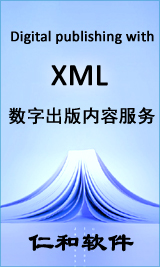汪舟
,
姜传海
,
陈艳华
,
嵇宁
材料科学与工艺
为研究不同激光淬火处理条件下激光淬火温度场和物相结构,运用ABAQUS/Standard对激光淬火处理AISI4140钢进行了有限元模拟,并结合实验进行了验证.结果表明:激光淬火材料最高温度并不在光束中心,而是出现在距激光束中心2 mm的位置,且不随着光束移动速度的增大而改变位置;在激光束最高温度恒定为1150℃情况下,不同移动速度对于升温速率影响更加显著,而降温速率则相对稳定;材料本身性质和热边界条件是影响降温速率的主要因素,激光束移动速度为次要因素.另外,可以通过此模型制定合理激光处理工艺得到相应深度马氏体硬化层.
关键词:
AISI4140钢
,
激光淬火
,
温度场
,
马氏体层深
,
有限元模拟
Mustafa Ulutan Osman N. Celik Hakan Gasan Umit Er
材料科学技术(英文)
In this study, the effects of various surface treatments on the friction and wear behavior of AISI 4140 steel have been evaluated. Sample surfaces of AISI 4140 steel were treated by quenching, carburizing, boronizing and plasma transferred arc (PTA) modification. The microstructural characteristics of surface treated steel samples were examined by optical microscopy and scanning electron microscopy (SEM). The mechanical properties of the samples including the surface roughness, microhardness, and abrasive and adhesive wear characteristics were also evaluated. Wear tests were applied by using a block-on-disc configuration under dry sliding conditions. The wear behavior and friction characteristics of the samples were determined as a function of sliding distance. Each sample group was compared with the other sample groups, and it was observed that
the carburized samples demonstrated the lowest weight losses; however, PTA-treated samples demonstrated the lowest coefficient of friction in comparison to the other sample groups at the same sliding distance.
关键词:
AISI 4140 steel
G Subhash Chander
,
G Madhusudhan Reddy
,
A Venugopal Rao
钢铁研究学报(英文版)
Fundamental investigation of continuous drive friction welding of austenitic stainless steel (AISI 304) and low alloy steel (AISI 4140) is described. The emphasis is made on the influence of rotational speed on the microstructure and mechanical properties such as hardness, tensile strength, notch tensile strength and impact toughness of the dissimilar joints. Hardness profiles across the weld show the interface is harder than the respective parent metals. In general, maximum peak hardness is observed on the stainless steel side, while other peak hardness is on the low alloy steel side. A trough in hardness distribution in between the peaks is located on the low alloy steel side. Peak hardness on the stainless steel and low alloy steel side close to the interface increases with a decrease in rotational speed. All transverse tensile joints fractured on stainless steel side near the interface. Notch tensile strength and impact toughness increase with increase in rotational speed up to 1500 r/min and decrease thereafter. The mechanism of influence of rotational speed for the observed trends is discussed in the torque, displacement characteristics, heat generation, microstructure, fractography and mechanical properties.
关键词:
friction welding
,
dissimilar metal joint
,
austenitic stainless steel
,
low alloy steel
,
microstructure
,
impact toughness
,
tensile strength
A H Meysami
,
R Ghasemzadeh
,
S H Seyedein
,
M R Aboutalebi
钢铁研究学报(英文版)
The effects of rod falling and moving, external flow field, boiling film and radiation were investigated on fluid flow and heat transfer of AISI 4140 steel horizontal rod during direct quenching by mathematical modeling. The flow field and heat transfer in quenching tank were simulated by computational fluid dynamics (CFD) method considering falling and moving of rods during process. Therefore, modeling of flow field was done by a fixed-mesh method for general moving objects equations, and then, energy equation was solved with a numerical approach so that effect of boiling film heat flux was considered as a source term in energy equation for solid-liquid boundary. Simulated results were verified by comparing with published and experimental data and there was a good agreement between them. Also, the effects of external forced flow and film boiling were investigated on heat flux output, temperature distribution and heat transfer coefficient of rod. Also simulated results determined optimum quenching time for this process.
关键词:
direct quenching
,
AISI 4140
,
moving object
,
heat transfer modeling
奚运涛
,
刘道新
,
韩栋
,
韩增福
材料热处理学报
doi:10.3969/j.issn.1009-6264.2007.05.025
采用不同温度对AISI 420马氏体不锈钢进行离子渗氮处理.借助光学显微镜和X射线衍射(XRD)技术分析了渗氮层的微观组织结构,利用显微硬度计测试了渗氮层的硬度分布,通过电化学极化曲线测试和盐雾腐蚀试验研究了离子渗氮AISI 420不锈钢在模拟工业环境中的腐蚀行为.结果表明:AISI 420不锈钢350℃低温离子渗氮层由ε-Fe3N和N过饱和固溶体αN相组成,其化学稳定性高,加之固溶Cr元素的联合作用,明显提高了AISI 420不锈钢基材的腐蚀抗力.AISI 420钢经450℃和550℃渗氮处理,渗氮层中的αN分解成了α相和CrN,造成基体贫Cr,降低了基材的耐蚀性能.马氏体不锈钢低温离子渗氮处理不仅可以提高表面硬度,而且可以获得良好的耐蚀性能.
关键词:
离子渗氮
,
马氏体不锈钢
,
腐蚀
,
AISI420
周书才
,
杨杰
,
杨永均
钢铁钒钛
研究了40 tLF炉精炼AISI410不锈钢时,在常压下吹氮气增氮工艺(吹氮流量、吹氮时间及钢液温度)对AISI410不锈钢氮含量的影响,建立了AISI410不锈钢氮溶解度热力学计算模型.结果表明:钢中氮含量随着吹氮时间、氮气流量的增加而增大;常压下吹氮10 min,钢液含氮量可达到0.05%;随着氮流量增加钢液达到饱和的时间缩短,氮的溶解度随着钢液温度的降低而升高.应用热力学模型进行了分析,不同吹氮条件下氮溶解度实测值与热力学模型计算值较吻合.为LF炉精炼含氮不锈钢控制氮含量提供了理论依据.
关键词:
AISI410不锈钢
,
LF炉
,
吹氮
,
合金化
,
热力学模型
朱云峰
,
潘邻
,
张良界
,
李朋
,
马飞
,
杨闽红
,
童幸生
,
王成虎
材料保护
为了提高奥氏体不锈钢的表面硬度并保持其良好的耐蚀性,采用自主开发的低温渗碳工艺对AISI316奥氏体不锈钢进行渗碳处理.运用金相显微镜和显微硬度计表征了渗碳强化层组织,通过电化学试验检测了渗碳强化层的耐蚀性.结果表明:渗碳温度越高,渗碳强化层表面硬度越高,耐蚀性越差;经过470℃低温渗碳处理的AISI316奥氏体不锈钢表面硬度从原来的300 HV0.25N增加到800~1 000 HV0.25N,有效硬化层达36.1 μm,而其耐蚀性保持不变.
关键词:
低温渗碳
,
AISI316奥氏体不锈钢
,
渗碳强化层
,
表面硬度
,
耐蚀性
陈君
,
李全安
,
张清
,
王建章
,
阎逢元
中国腐蚀与防护学报
doi:10.11902/1005.4537.2013.195
采用电化学方法、微观形貌观察以及失重法分析研究了AISI 316不锈钢和Al2O3陶瓷摩擦副在模拟海水中的腐蚀磨损行为,探讨了摩擦对不锈钢腐蚀行为的影响以及腐蚀磨损交互作用.结果表明,在本实验条件下摩擦作用显著增加了AISI 316不锈钢的腐蚀倾向,其腐蚀率显著增加.纯磨损量占总腐蚀磨损量的76%~88%,材料的损失主要是由摩擦作用所引起,腐蚀磨损交互作用量占总腐蚀磨损量的12%~24%,腐蚀磨损交互作用是影响材料耐磨蚀性能的重要因素.
关键词:
AISI 316不锈钢
,
腐蚀磨损
,
交互作用
,
海水






